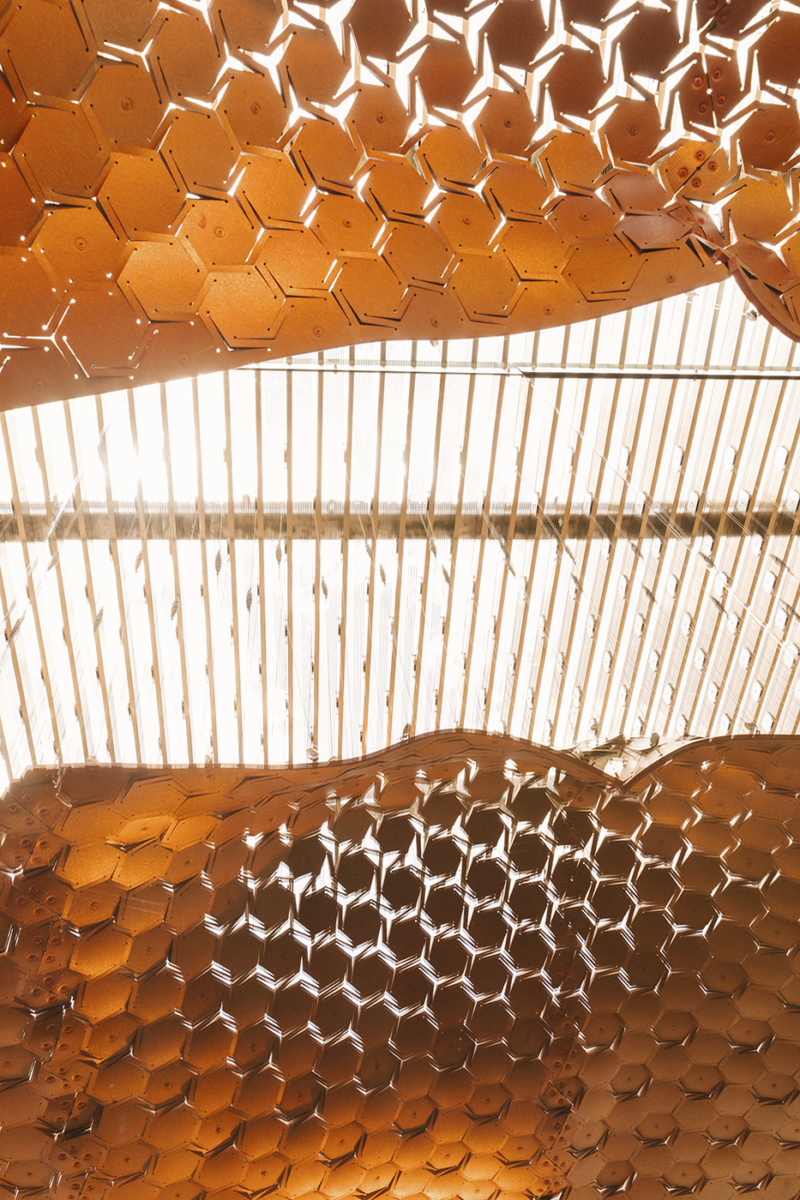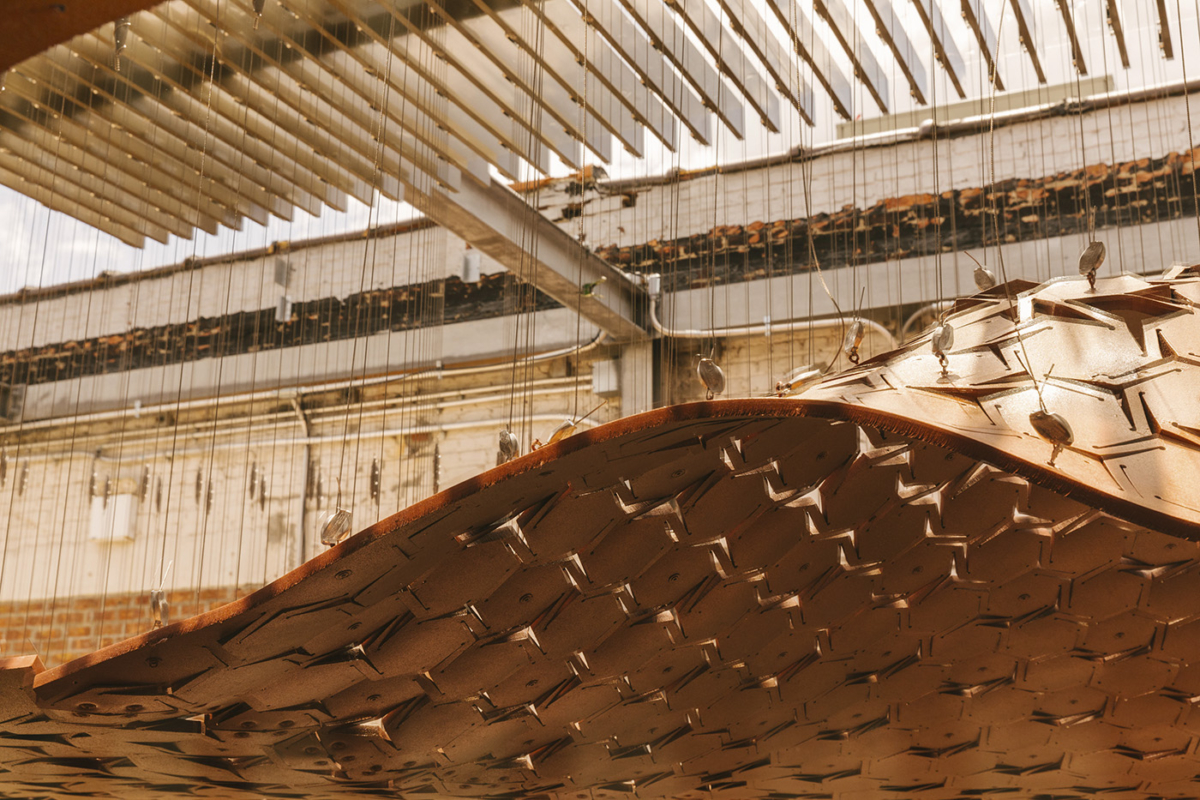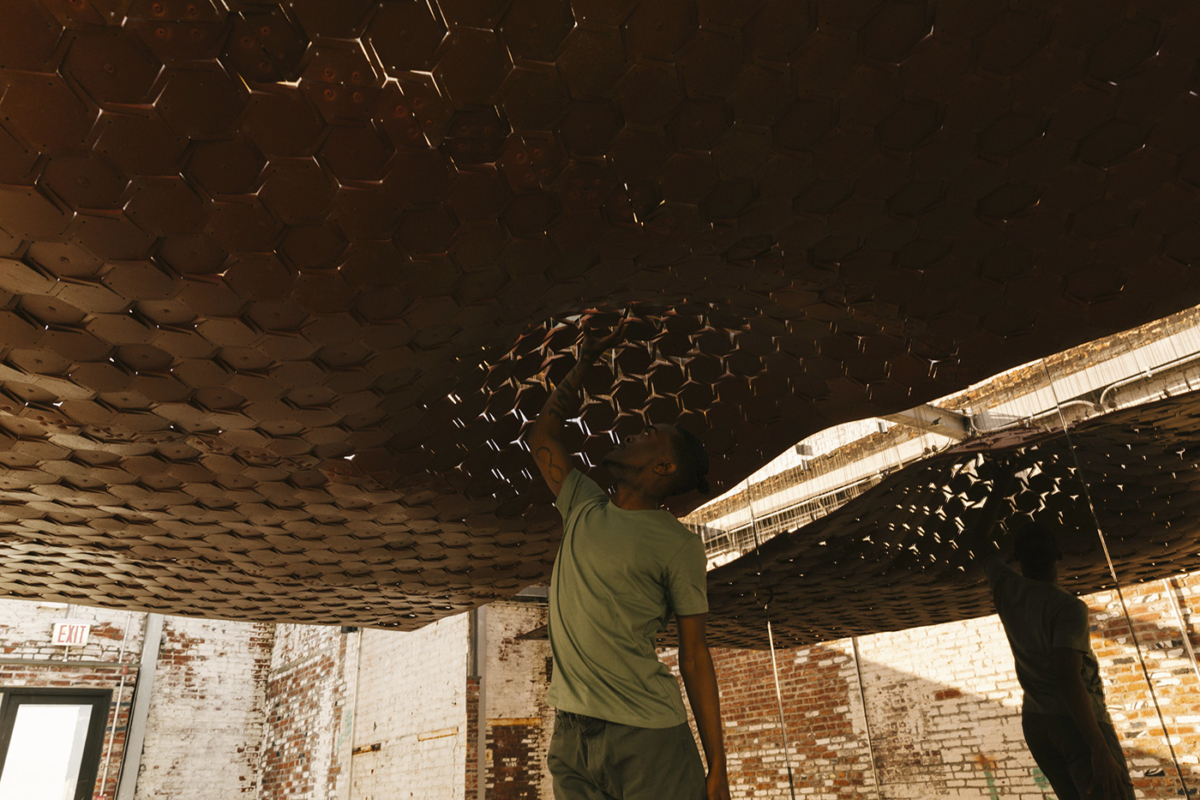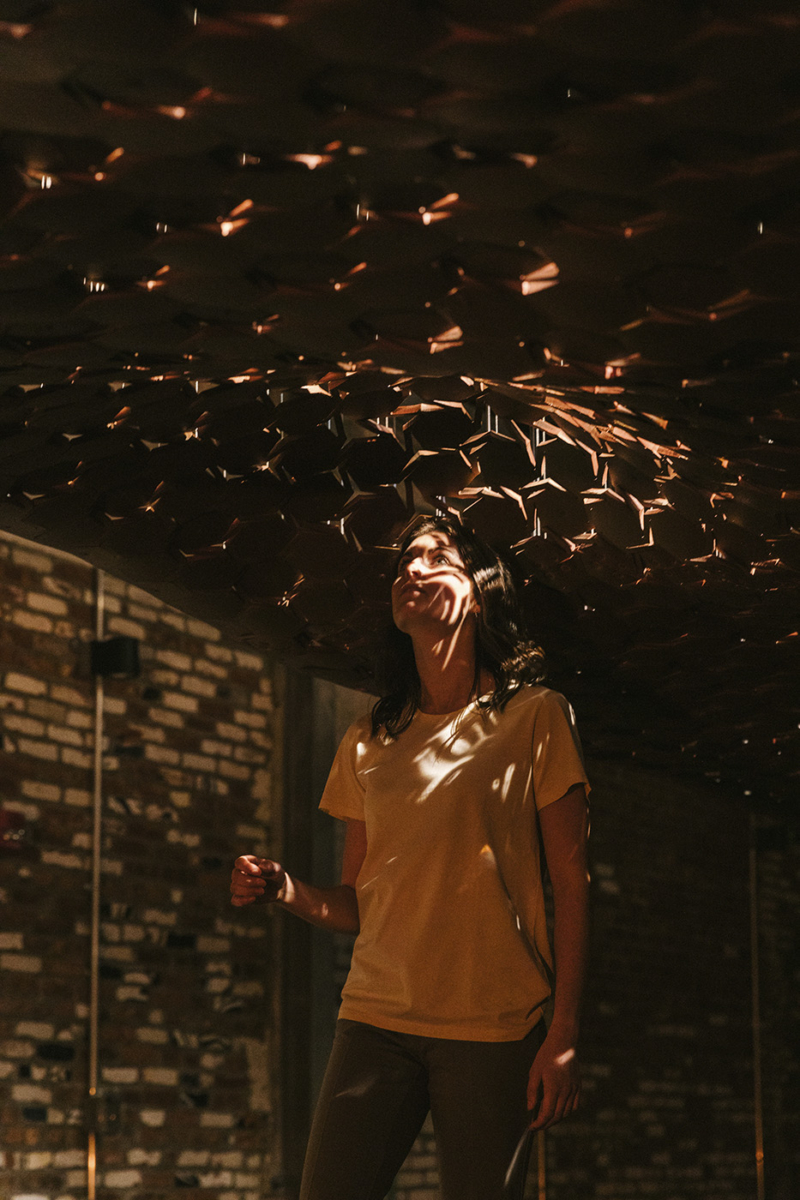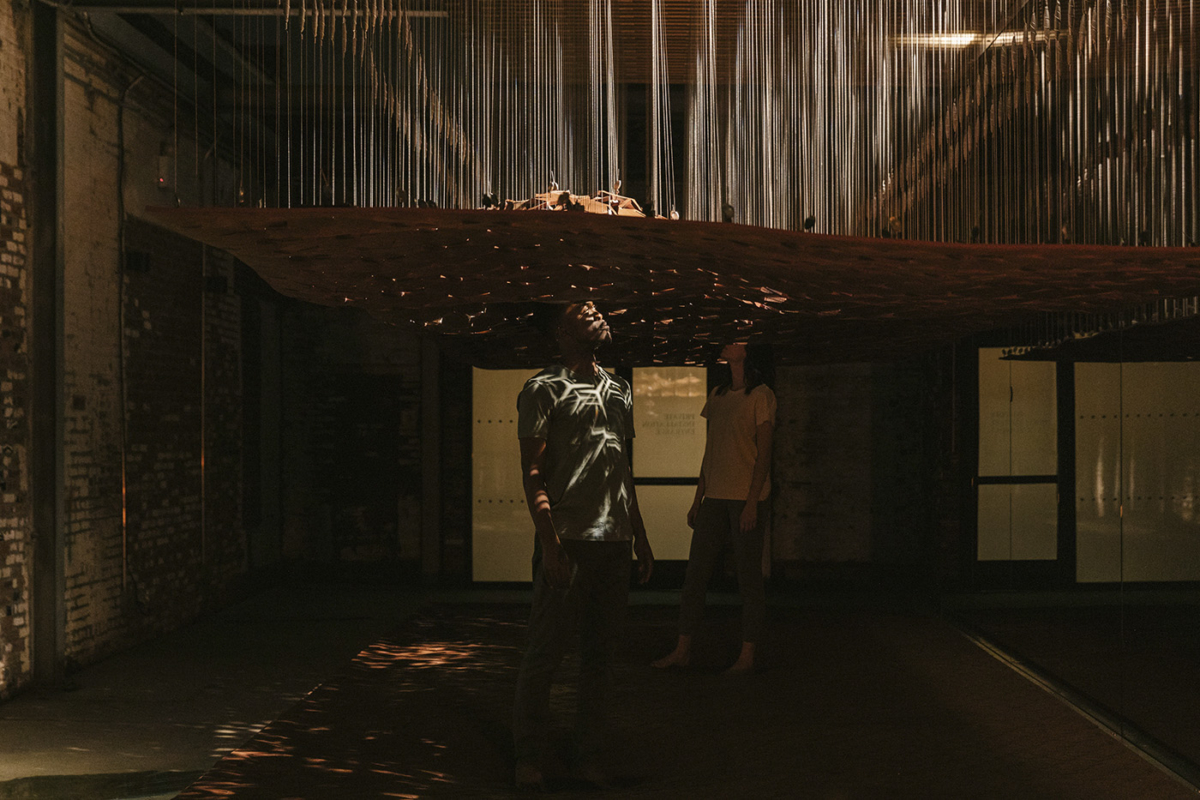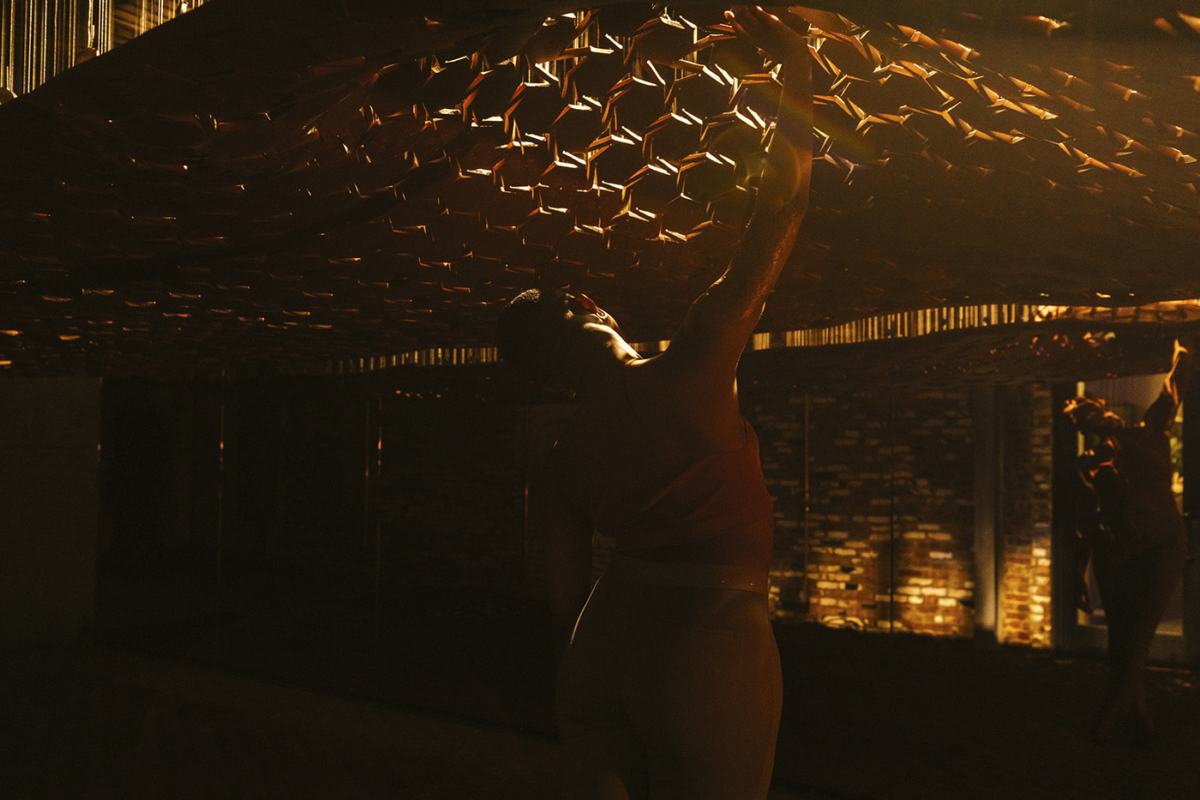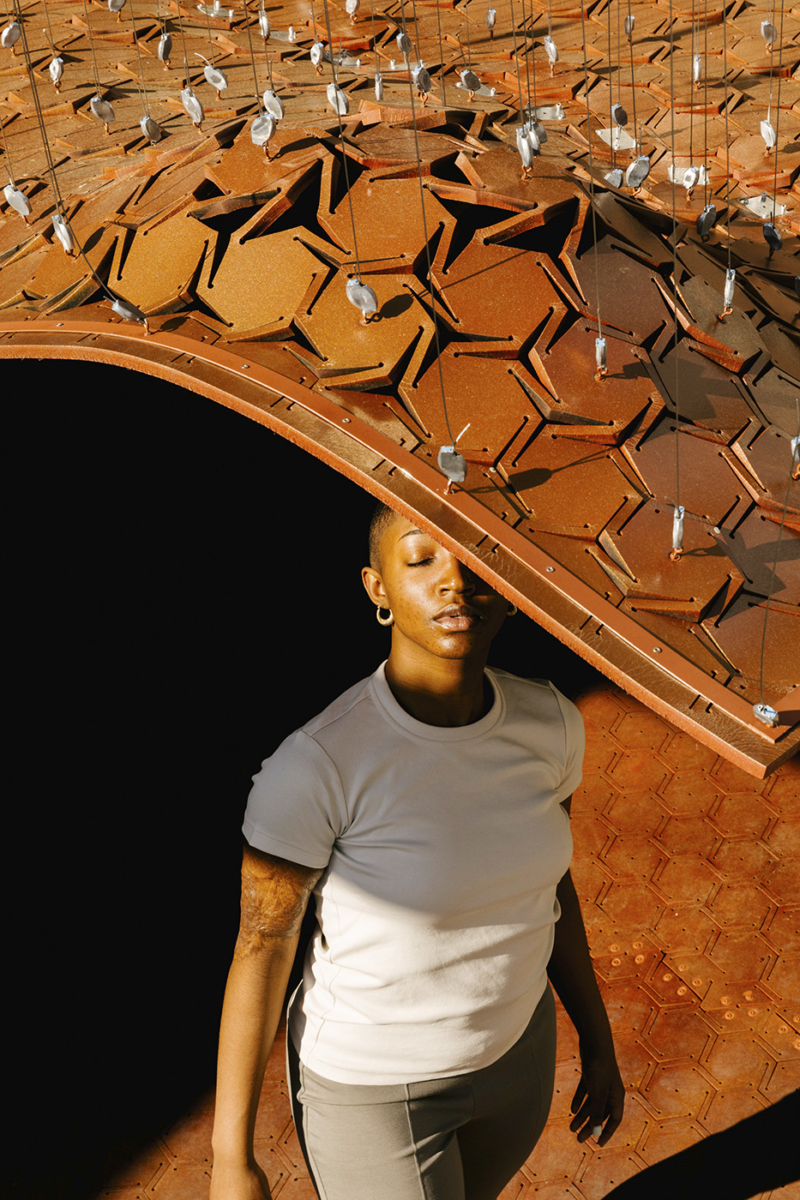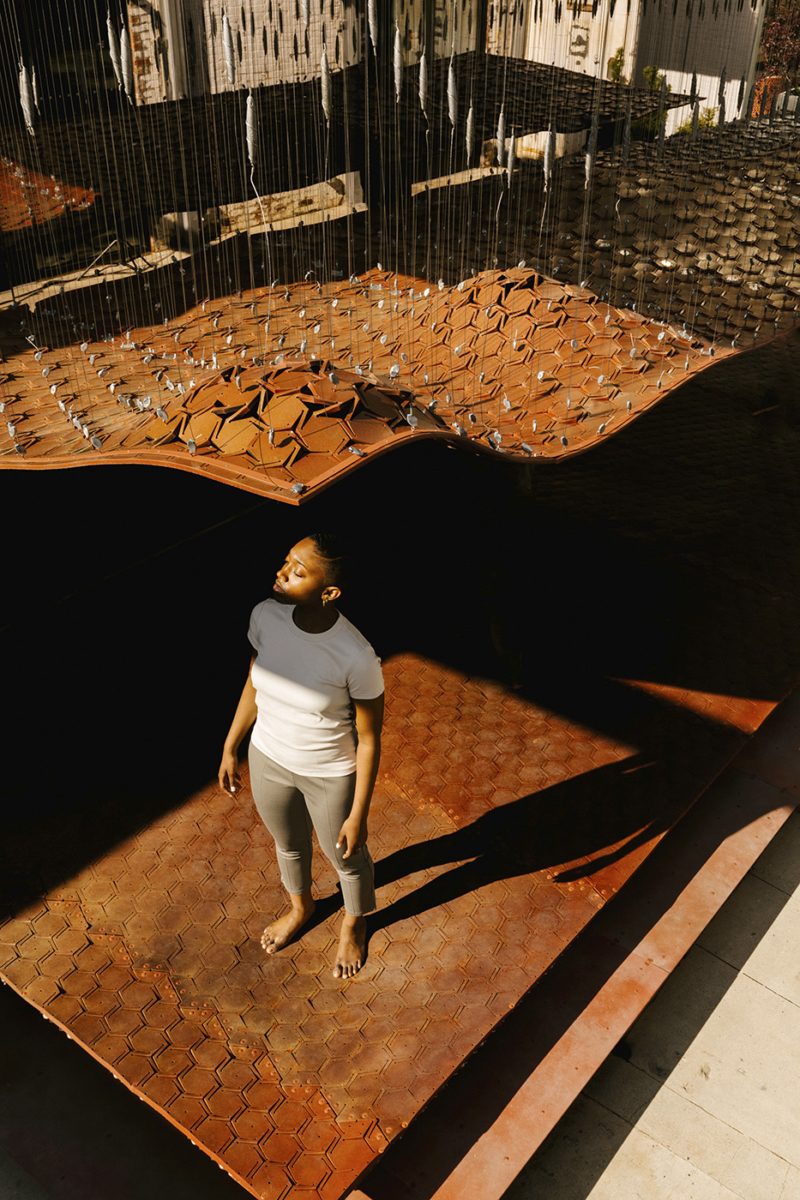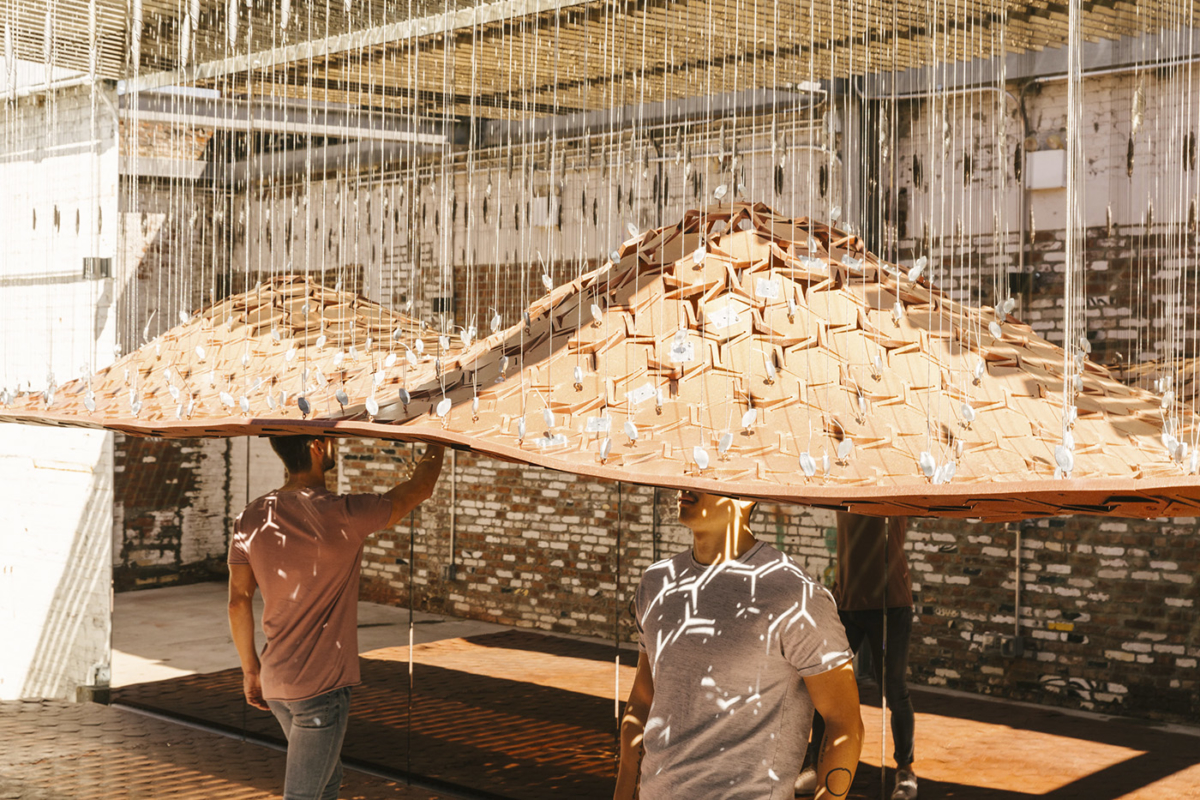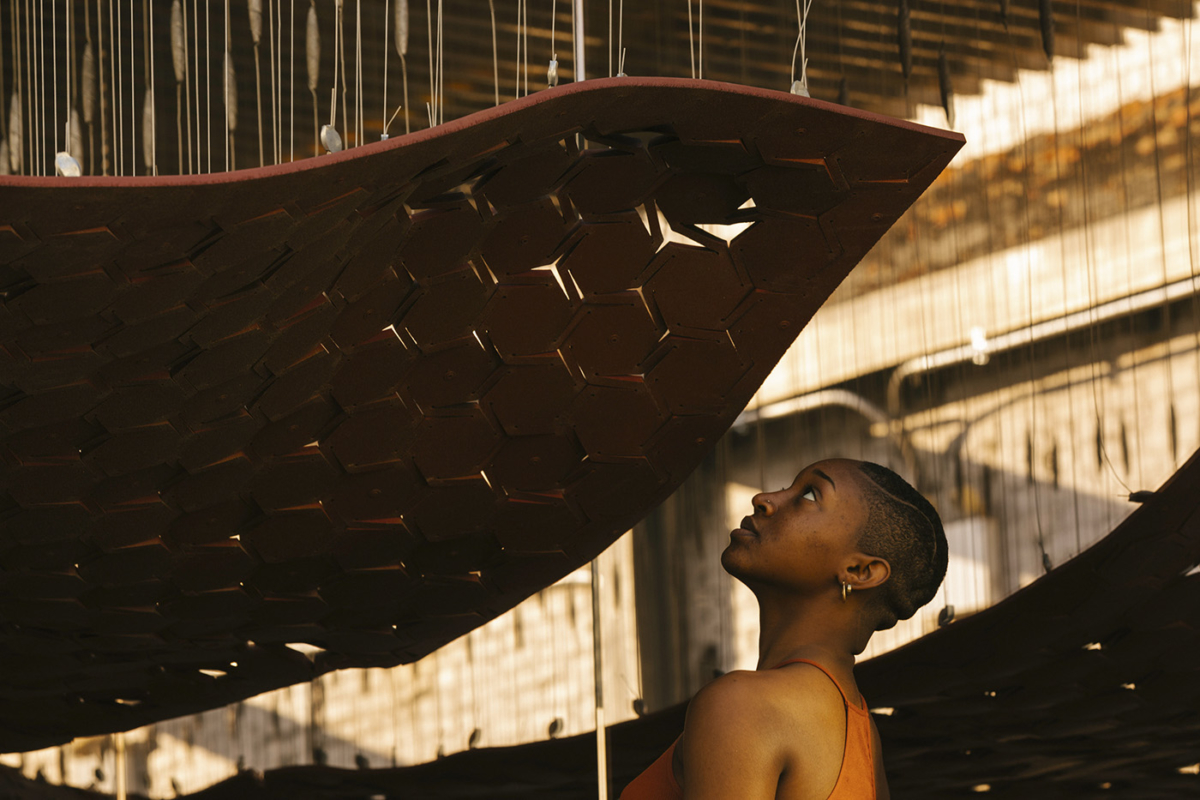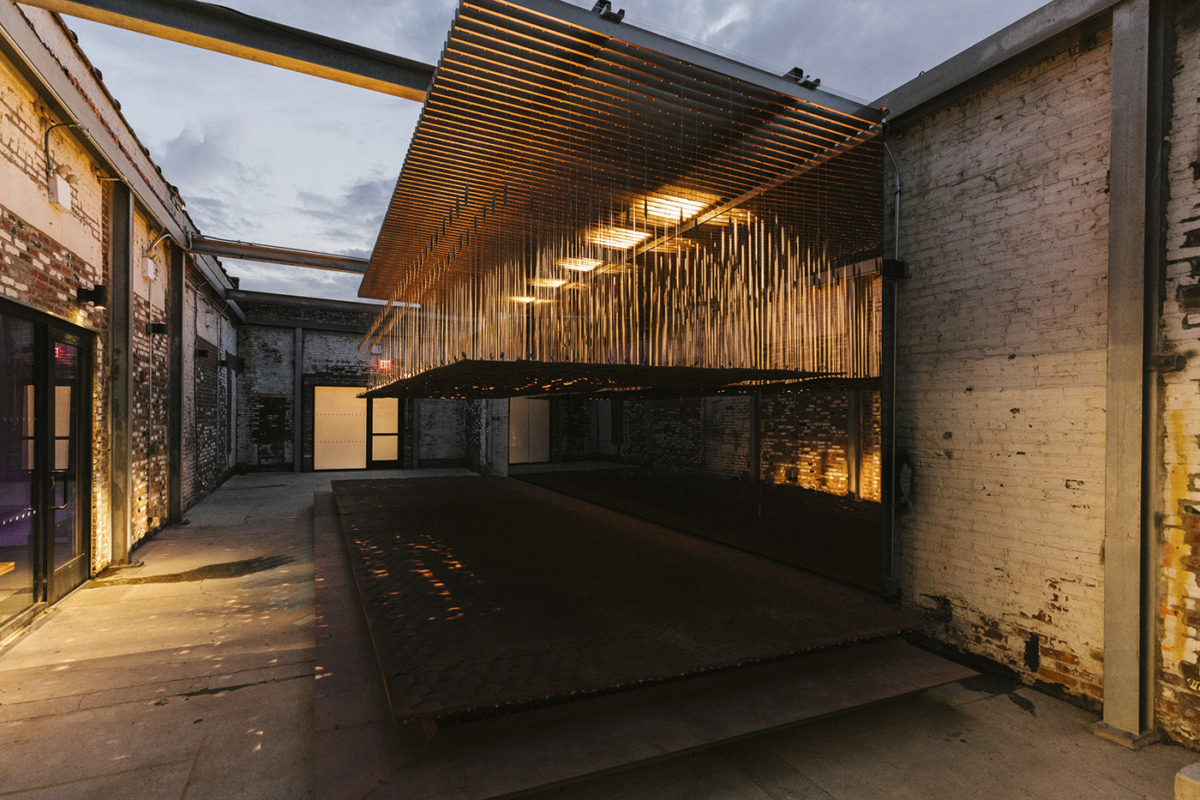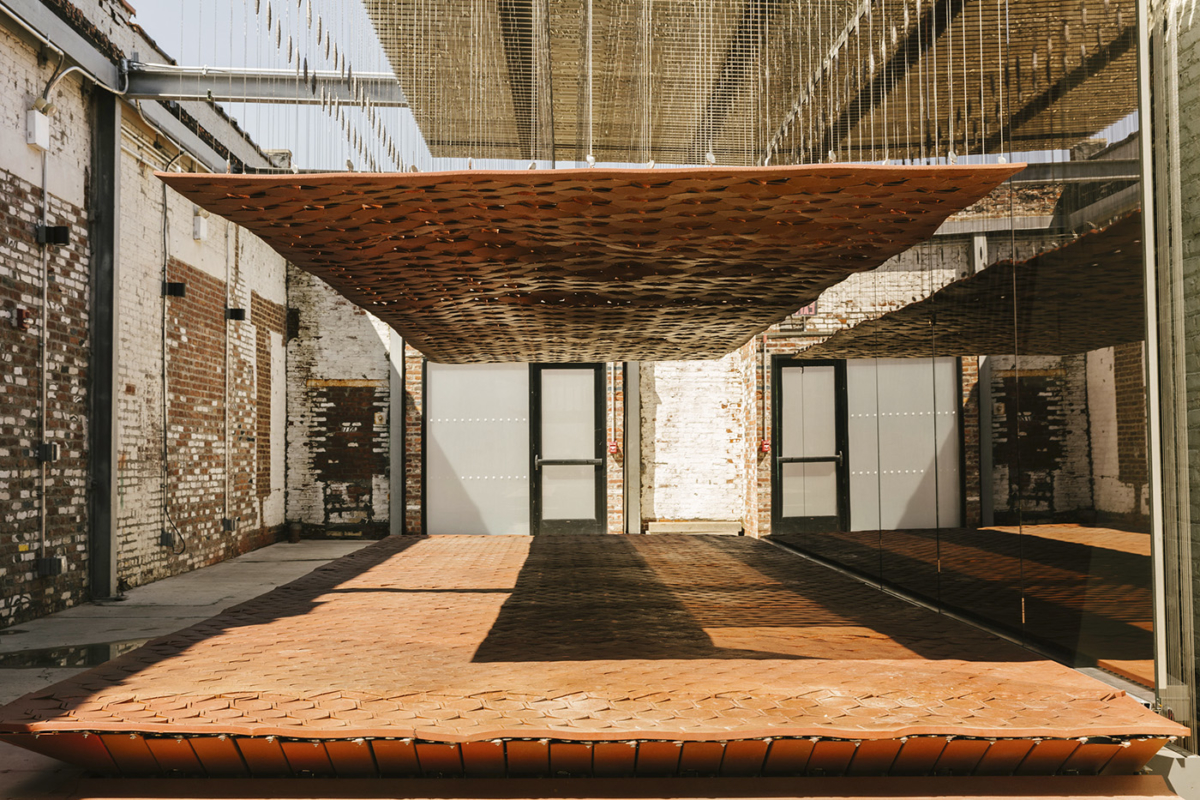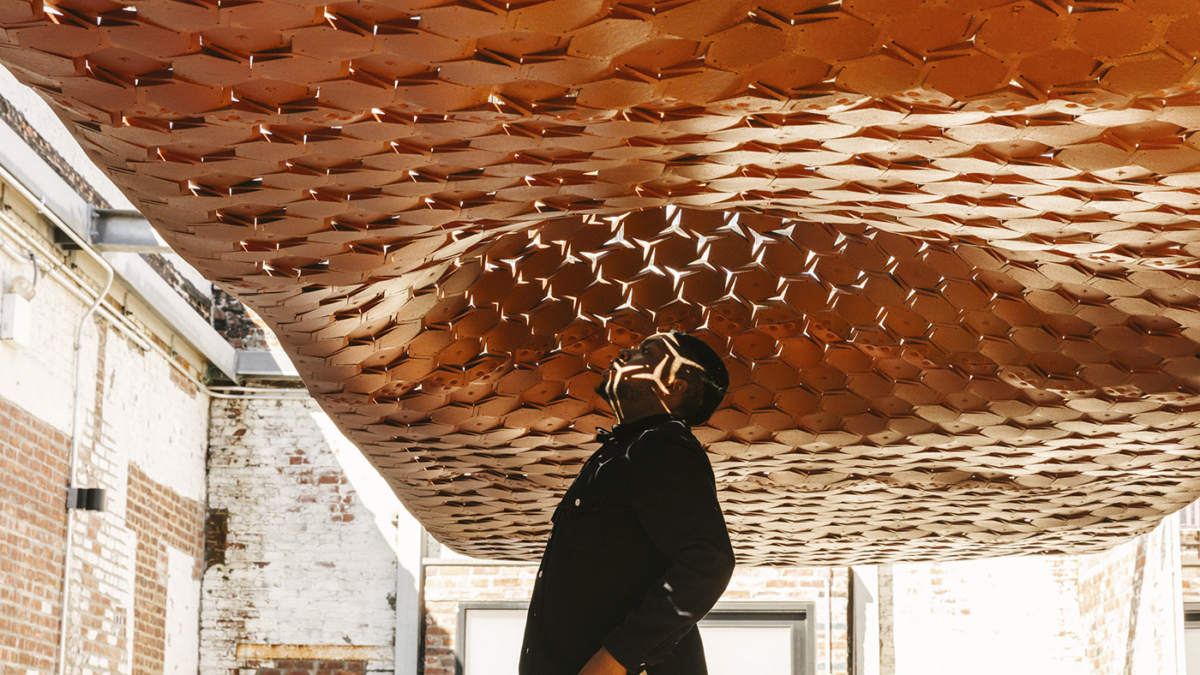
URBAN IMPRINT_ Studio INI
Based in Athens and London, Nassia Inglessis established Studio INI in 2015 with the intention to use computational and digital tools to improve human interaction and experience. The studio designed the Greek pavilion for the 2018 London Biennial.
Urban Imprint is an immersive installation created by the Greek designer’s firm Studio INI. The installation comprises a floor and a ceiling that change shape in response to movement, and was designed in response to a brief from MINI-backed A/D/O to explore the notion of personal identities in cities.
cxxxxx
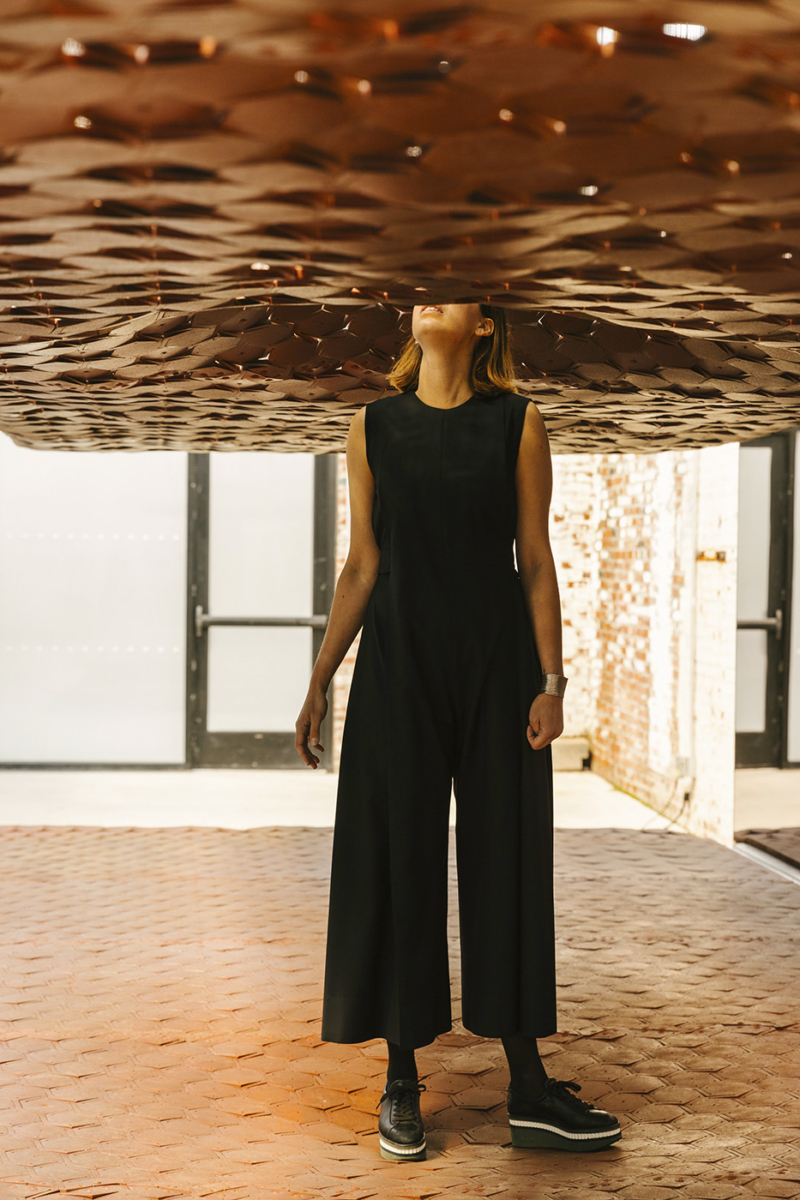
Unveiled for this year’s NYCxDesign week, the design is intended to invert the typical relationship between people and the urban environment. Instead of people reacting to built forms, the structure adapts to them.
“I wanted to create a space where your every step, your every imprint is amplified,” Inglessis told Dezeen. “I wanted to create an enclosed space where you get immersed so that came to being a ceiling and a floor.”
To create the morphing effect, Inglessis has connected the floor and the ceiling with a pulley system, comprising 400 chords that are hidden behind a mirrored screen at the back of the structure. As visitors step on the platform, it dips down and triggers the pulleys to tighten and lift the roof into a dome shape. The leather-like skin is made from a mixture of rubber and concrete and is coloured dark red, picking up on the hues of the brick walls that encase A/D/O’s yard. The material is water-jet cut with markings that form a honeycomb pattern and make it supple enough to move. The punctures also allow natural light to filter through.
While the roof is held up by the chords, the floor is laid atop spring steel, which the team has laser-cut into a custom swirling pattern to allow it deform in three ways to create a dip shape. Walking on the spongey platform is similar to the sensation of treading on a trampoline.
c
All rights reserved to Studio INI
via dezeen

